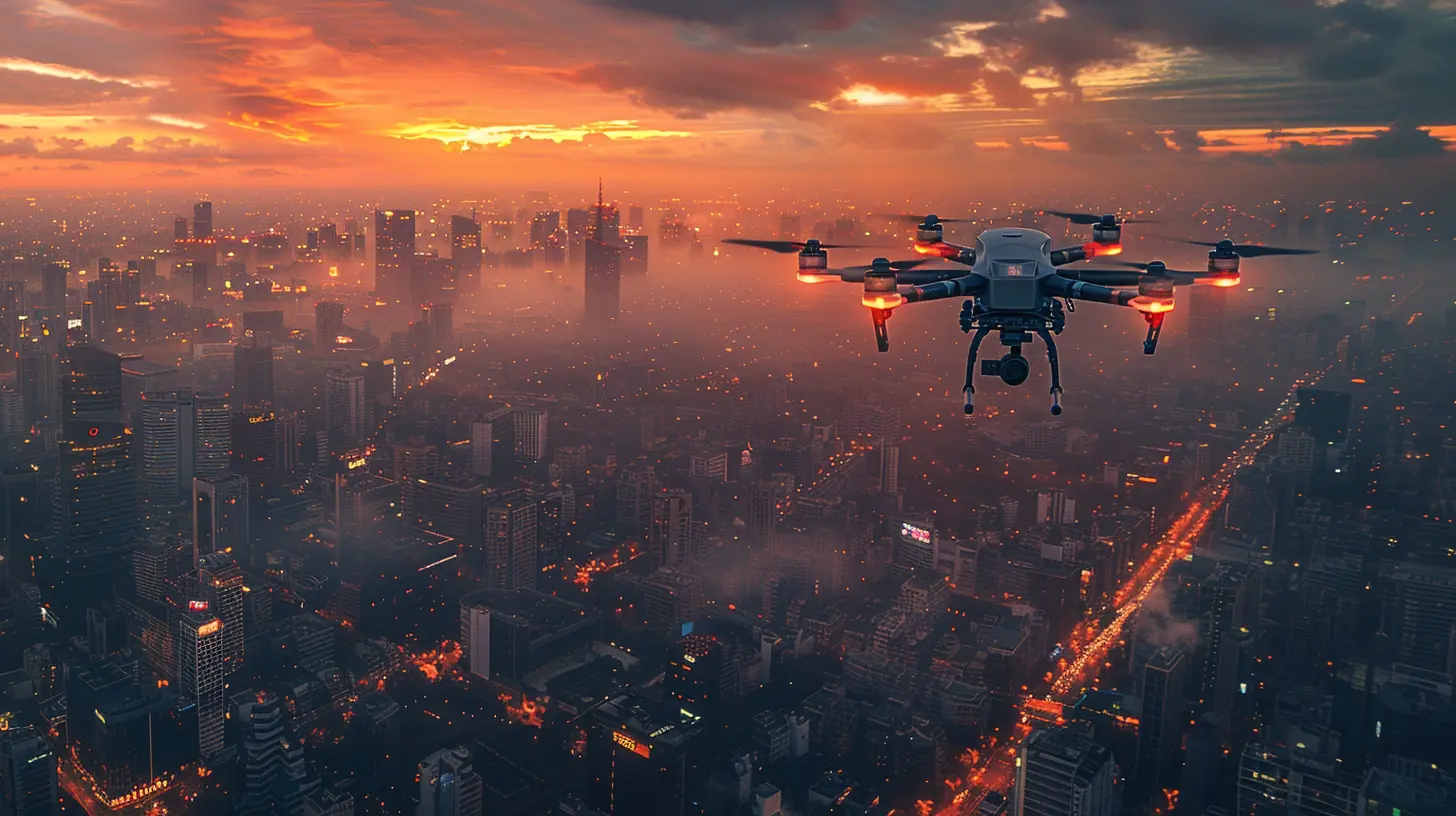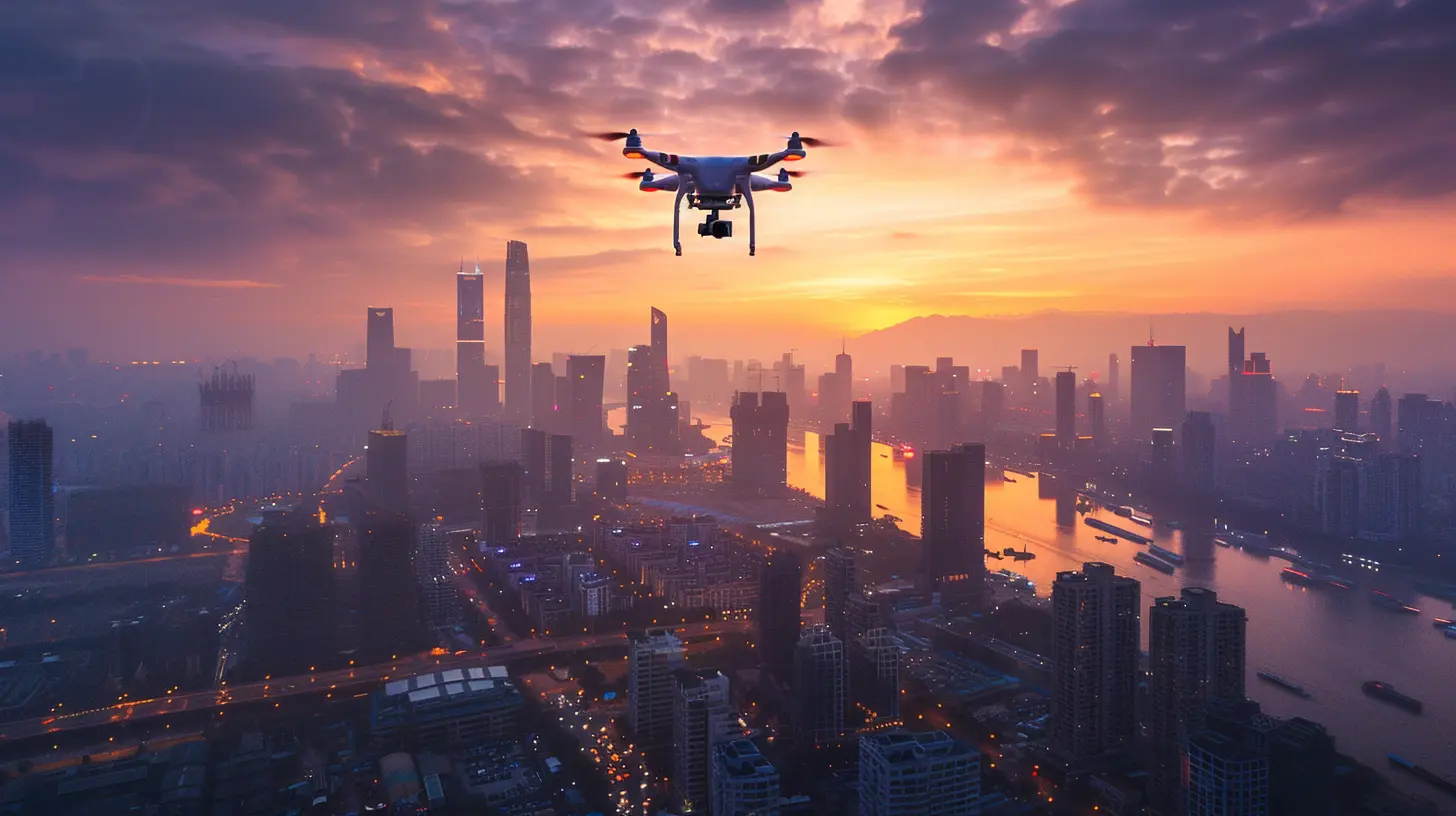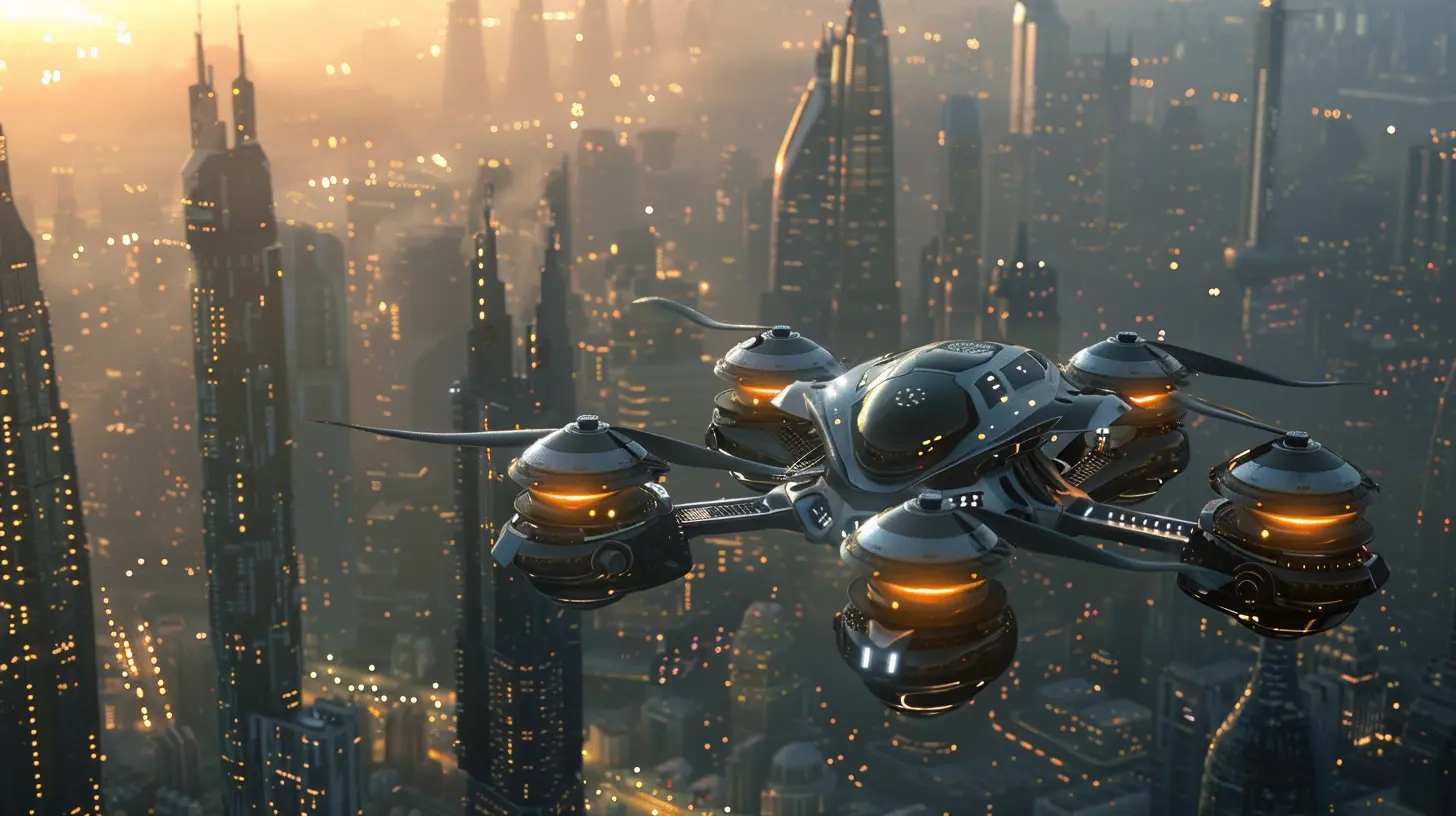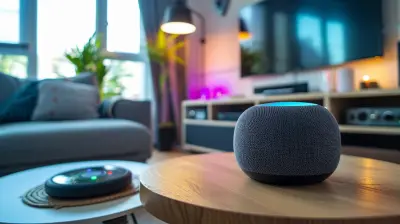Drones and the Future of Smart Cities
23 August 2025
Imagine looking up at the sky and seeing drones whizzing by—not just for fun or delivering pizza but actually working hard to make your city smarter. Sounds futuristic, right? But guess what? It's already happening. Drones, a.k.a. unmanned aerial vehicles (UAVs), are quickly becoming one of the backbones of smart city development. Whether it’s monitoring traffic, assisting emergency services, or inspecting infrastructure, drones are setting the stage for a more efficient, responsive, and connected urban future.
So, how exactly are drones shaping the next generation of smart cities? Buckle up, because we’re about to dive into the sky-high potential of drones and what they mean for our daily lives.
What Are Smart Cities, Anyway?
Let’s break it down real quick. A smart city uses technology to improve the quality of urban life—think automation, AI, data analytics, and interconnected devices (hello, IoT!). The goal? Greater efficiency, better public services, reduced environmental impact, and improved living standards.Now throw drones into this tech mix, and we’ve got something seriously powerful.
Why Drones Belong in Smart Cities
Drones are like the Swiss Army knives of the tech world. They can see from above, collect real-time data, react quickly, and access places humans can’t easily reach. Their ability to bridge the gap between the physical and digital worlds makes them ideal for smart cities.Here’s why drones are a natural fit:
- Mobility: They can be deployed instantly and reach tight spots within minutes.
- Real-Time Data: Drones feed fresh data to city management systems like traffic control and emergency response.
- Cost-Effective: Doing regular inspections or surveillance with humans and machines is expensive. Drones slash those costs.
- Safety: They take over high-risk tasks like inspecting tall buildings or monitoring hazardous zones.
Urban Planning Gets a Bird’s Eye View
Urban planning has always been complex. You're dealing with zoning laws, construction, population density, and lots of moving parts. Drones are changing that game.With high-resolution aerial photography, LiDAR, and thermal imaging, drones offer planners a detailed view of the urban sprawl. They help identify areas that need development, monitor progress, and even model future expansion.
Imagine being able to simulate new roads or green spaces before breaking ground—all thanks to data collected by drones.
Traffic Management: Smarter Roads, Happier Drivers
Let’s be honest: traffic is a nightmare in most cities.Here’s where drones swoop in to save the day. They can monitor traffic flow from above, detect congestion hotspots, accidents, or even dangerous driving behavior. This data feeds directly into city traffic systems to tweak light timings or alert drivers via apps. Some cities are even testing drone-based live updates to drivers.
The result? Less time stuck in traffic and more time doing what you actually want to do.
Emergency Services Just Got Supercharged
Seconds count during emergencies. Whether it’s a fire, accident, or natural disaster, first responders can't afford delays.Drones provide instant aerial views, helping responders assess the situation before they even arrive. They can navigate through debris, relay live video, and even deliver essential medical supplies in remote or hard-to-access places.
In fire situations, for instance, thermal imaging drones can locate hotspots and trapped individuals. It’s like giving fire departments superhero vision.
Infrastructure Inspections Made Easy
Bridges, skyscrapers, tunnels, and power lines—these structures need regular inspections. But climbing them or shutting them down is costly and risky.Using drones equipped with HD cameras, sensors, and AI, cities can perform inspections with minimal disruption. These drones can detect cracks, rust, or weaknesses that would be nearly invisible from the ground.
Better inspections mean safer cities.
Environmental Monitoring from the Skies
Smart cities care about keeping things green. Drones help monitor environmental health in real-time. Whether it's air quality, noise pollution, or water contamination, drones are collecting valuable data.For example, drones equipped with gas sensors can detect leaks or monitor industrial emissions. Some even help with wildlife conservation by tracking animals and surveying forests.
In a way, drones are the new watchdogs—and they’ve got wings.
Drone Delivery: Yes, It’s Already Happening
We’ve all heard the hype around drone delivery. And let’s be real, who wouldn’t want their online order dropped at their doorstep in less than 30 minutes?But it’s not just e-commerce giants like Amazon experimenting here. In smart cities, drones are being used to deliver medicines, lab samples, and even food during emergencies or pandemics.
These autonomous deliveries reduce road traffic and allow services to reach areas that would’ve been otherwise hard to access.
Convenient? Absolutely. Revolutionary? You bet.
Public Safety and Surveillance (Without the Creepy Factor)
Yes, surveillance drones can raise privacy concerns. But when used responsibly, they offer huge benefits.Think crowd control during events, patrolling dangerous neighborhoods, or even detecting crimes in real-time. Cities are already using drones to assist law enforcement by providing aerial support during high-risk situations.
Of course, it's critical to create strict regulations and transparent policies to make sure we're not trading privacy for safety.
The Role of 5G and AI in Powering Drone Tech
Smart drones don't operate in a vacuum (no pun intended). To really function as part of a smart city, they need ultra-fast connectivity and AI.Enter 5G. This next-gen mobile network allows drones to transmit high-definition video and sensor data in real-time with minimal delay. That’s a game-changer for applications like autonomous navigation and live emergency assessments.
AI, on the other hand, turns drones from flying cameras into intelligent agents. With machine learning algorithms, drones can recognize traffic patterns, identify structural weaknesses, or even detect illegal dumping—all without human intervention.
The Regulatory Balancing Act
Let’s not ignore the elephant in the sky. With great drone power comes great responsibility—and a boatload of regulations.As cities adopt more drones, managing airspace, ensuring public safety, and protecting privacy becomes tricky. Authorities need to create drone corridors, geo-fenced areas, and enforce drone pilot certifications.
Some countries are already developing Urban Air Mobility (UAM) regulations to manage drone taxis and automated cargo delivery. Basically, the rules are catching up—but slowly.
The Challenges (Because It’s Not All Sunshine and Skylines)
Alright, not everything is picture-perfect. Drones do come with some challenges:- Battery Life: Most drones can only fly for 20–30 minutes on one charge.
- Weather Limitations: Rain, wind, and snow can ground even high-end drones.
- Security Risks: Hacked drones could pose serious threats.
- Privacy: Nobody wants to feel like Big Brother is watching 24/7.
But the good news? These challenges are being addressed. Better batteries, weatherproofing, encryption, and clear laws are all part of the roadmap.
Real-World Use Cases Already in Action
Want proof this isn’t sci-fi? Check these out:- Dubai: Testing drone taxis to beat traffic congestion.
- Singapore: Using drones for urban planning, inspections, and security.
- Helsinki: Drones deliver medical samples between hospitals in record time.
- Los Angeles: Drones assist in police surveillance and traffic monitoring.
These cities are showing the rest of the world how drones can unlock smarter urban living.
What’s Next? A Glimpse Into the Future
Fast forward a few years, and here’s what’s possible:- Drone highways in the sky
- Fully autonomous delivery networks
- AI-piloted emergency drones
- Seamless drone-to-IoT communication
The sky isn’t the limit—it’s the launchpad.
Final Thoughts: We’re Just Getting Started
Drones are no longer toys or military-grade gadgets. They're fast becoming essential tools in building and maintaining smart cities. From delivering meds to inspecting bridges, they're doing jobs that make our cities cleaner, safer, and more efficient.As technology advances and regulations evolve, drones will become as common as traffic lights and smartphones. And who knows? One day, we might even look back and wonder how we ever built cities without them.
So the next time you see a drone buzzing overhead, don’t just think of it as a flying gadget—see it as a glimpse into the smarter future of our cities.
all images in this post were generated using AI tools
Category:
DronesAuthor:

Vincent Hubbard
Discussion
rate this article
1 comments
Savannah Russell
Drones can revolutionize smart cities by enhancing transportation, improving emergency services, and optimizing infrastructure maintenance, paving the way for more efficient urban living.
September 4, 2025 at 11:13 AM

Vincent Hubbard
Thank you for your insightful comment! I completely agree that drones have the potential to greatly enhance various aspects of urban life in smart cities.


